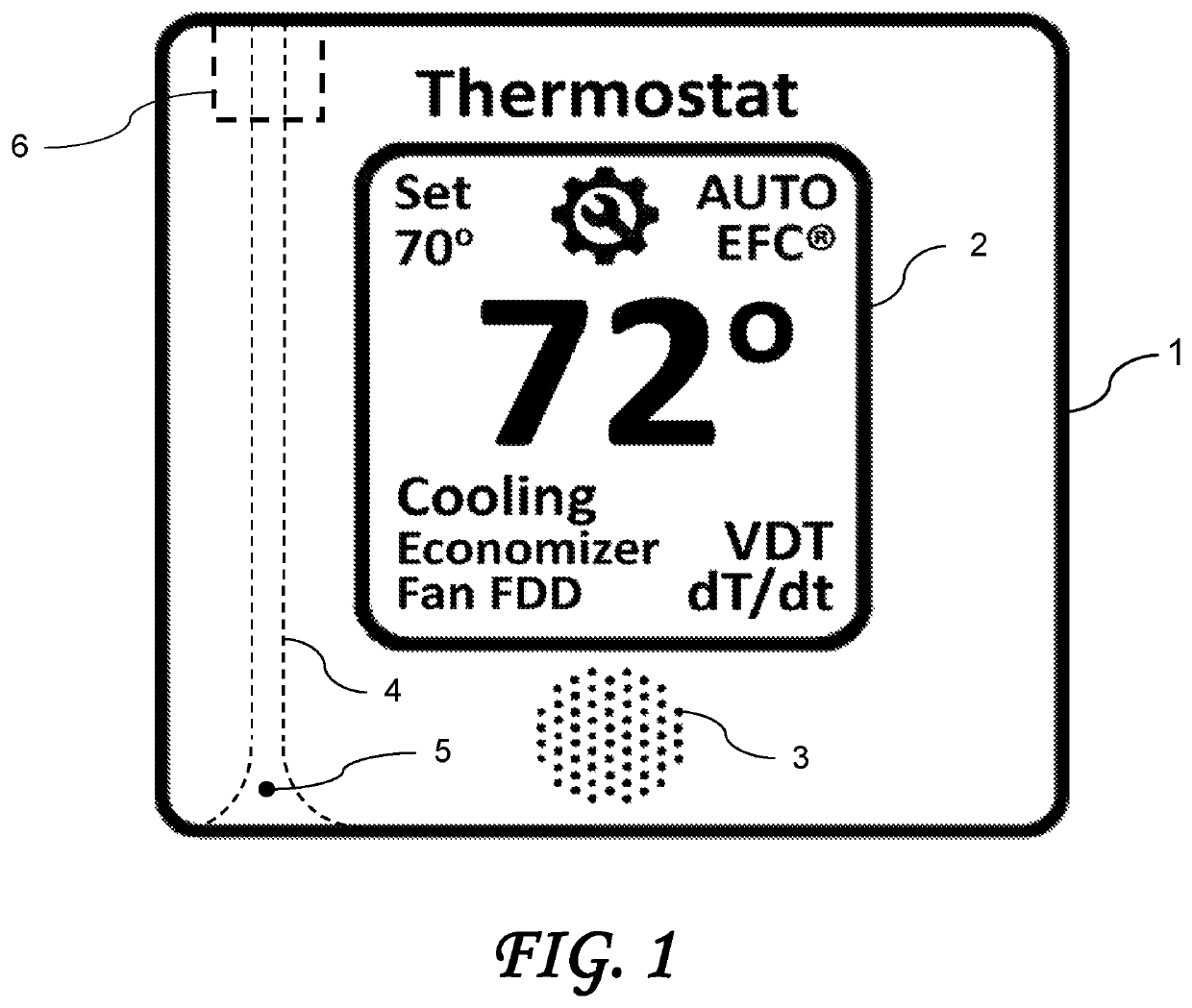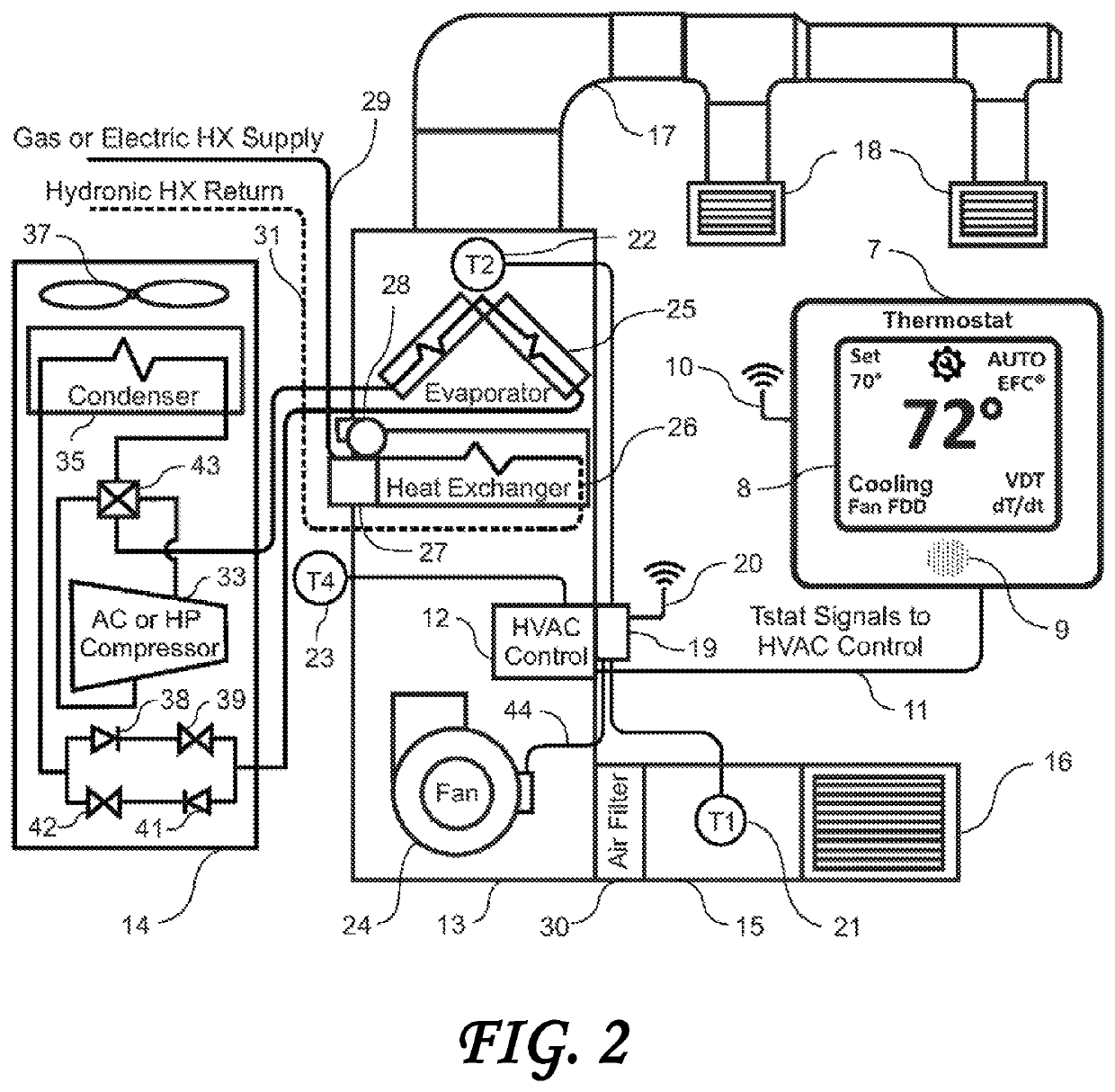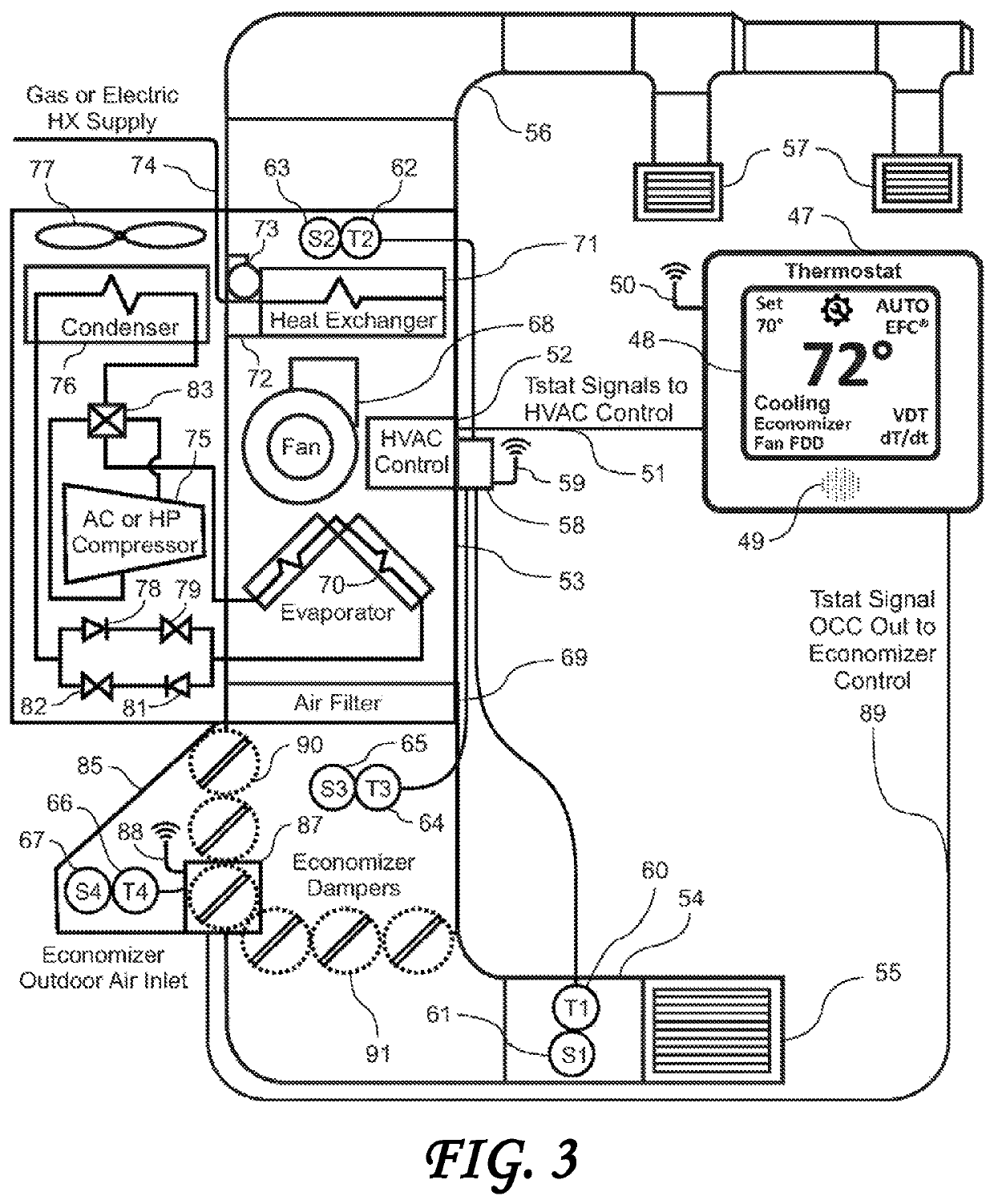Fault detection diagnostic variable differential variable delay thermostat
a technology of delay thermostat and diagnostic variable, which is applied in the direction of heating types, lighting and heating apparatus, instruments, etc., can solve the problems of nest thermostat not providing a fan-only heating method, not being able to vary, and still turning on if, so as to achieve the effect of improving energy efficiency
- Summary
- Abstract
- Description
- Claims
- Application Information
AI Technical Summary
Benefits of technology
Problems solved by technology
Method used
Image
Examples
Embodiment Construction
[0084]The following description is of the best mode presently contemplated for carrying out the invention. This description is not to be taken in a limiting sense, but is made merely for the purpose of describing one or more preferred embodiments of the invention. The scope of the invention should be determined with reference to the claims.
[0085]Where the terms “about” or “generally” are associated with an element of the invention, it is intended to describe a feature's appearance to the human eye or human perception, and not a precise measurement.
[0086]FIG. 1 shows a thermostat 1 used to control an HVAC unit. The thermostat 1 includes a display 2 providing a Variable Differential Temperature (“VDT”) control option to improve cooling or heating system efficiency by varying the cooling or heating differential to correct for short cycle events and lengthen on-cycles to increase thermal comfort and energy efficiency, save energy and extend the service life of the equipment. According t...
PUM
 Login to View More
Login to View More Abstract
Description
Claims
Application Information
 Login to View More
Login to View More - R&D
- Intellectual Property
- Life Sciences
- Materials
- Tech Scout
- Unparalleled Data Quality
- Higher Quality Content
- 60% Fewer Hallucinations
Browse by: Latest US Patents, China's latest patents, Technical Efficacy Thesaurus, Application Domain, Technology Topic, Popular Technical Reports.
© 2025 PatSnap. All rights reserved.Legal|Privacy policy|Modern Slavery Act Transparency Statement|Sitemap|About US| Contact US: help@patsnap.com



